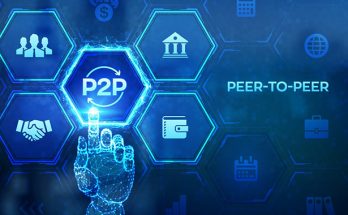Table of Contents
When we hear about cyber threats, we tend to immediately think of a certain type of perimeter attack carried out by external agents: phishing, hacking, DDoS, man-in-the-middle, SQL injection, and all the main "data breach" techniques carried out by malicious subjects to the detriment of our organization.
Starting from this assumption, when we think of an effective way to defend ourselves against this type of danger, solutions based on perimeter defenses come to mind: firewalls, antivirus, HTTPS/TLS certificates, encryption in transit, user input validation, and so on. In other words, we focus on a defense approach heavily based on perimeter defenses, which in most cases are achieved through the purchase, installation, and configuration of anti-malware and anti-intrusion software.
This reasoning is certainly correct: acquiring adequate tools and defense mechanisms is in fact extremely necessary to deal with a plurality of IT threats coming from outside and more concrete than ever, especially in recent years. However, it is important not to make the mistake of assuming that this approach, while necessary, is sufficient to minimize the risks associated with cyber threats.
In this article, we will explain the importance of supporting this "software-based" approach with a defensive strategy that focuses on a no less important aspect: the human factor, i.e. the awareness of the people who work within the organization regarding cyber threats related to their activities.
The good news is that, even in this case, we have software tools that can assist us in achieving this goal.
The meaning of "Awareness"
Before going into the analysis of the problem and the solutions, we deem it useful to spend a few minutes to clarify the concept behind this alternative and complementary approach to IT security: in other words, clarify what we mean when we talk about Cybersecurity Awareness.
In a nutshell, Cybersecurity Awareness refers to the knowledge and understanding of potential cybersecurity threats, risks, and best practices to protect digital systems, networks, and data from unauthorized access, damage, or theft: in other words, it involves being mindful of the potential dangers and taking proactive steps to mitigate them.
In today's interconnected world, where technology is deeply integrated into our personal and professional lives, cybersecurity awareness is crucial for several reasons:
- Protection against cyber threats. Cybersecurity awareness helps individuals and organizations understand the various types of cyber threats, such as malware, phishing, ransomware, social engineering, and more. It enables them to recognize and avoid these threats, reducing the likelihood of falling victim to cyberattacks.
- Data and privacy protection. Personal and sensitive data, both for individuals and businesses, are constantly at risk from cybercriminals. Cybersecurity awareness educates individuals about the importance of safeguarding their personal information, using strong passwords, enabling two-factor authentication, and being cautious about sharing sensitive data online.
- Prevention of financial loss. Cyberattacks can result in significant financial losses for individuals and organizations. Being aware of cybersecurity threats and best practices can help prevent financial fraud, identity theft, and unauthorized access to bank accounts or financial transactions.
- Preservation of reputation. A cyberattack can severely damage an individual's or organization's reputation. Awareness about cybersecurity empowers individuals to protect their online presence, including their social media accounts, by being cautious about the information they share and practicing safe online behavior. Organizations can implement cybersecurity measures to protect their customers' data and maintain their reputation as trustworthy entity.
- Compliance with regulations. Many industries and jurisdictions have specific rules regarding data protection and cybersecurity. Awareness of these regulations helps organizations ensure they are compliant, avoiding legal consequences and penalties.
- Protection of critical infrastructure. Critical infrastructure, such as power grids, transportation systems, and healthcare networks, relies heavily on technology and interconnected systems. Cybersecurity awareness is vital in protecting these infrastructure components from cyber threats that could have catastrophic consequences.
Overall, cybersecurity awareness is important because it empowers individuals and organizations to make informed decisions and take proactive measures to protect themselves against cyber threats. It fosters a culture of security, where everyone understands their role in maintaining a safe digital environment and takes responsibility for their online actions. If we consider that, according to the World Economic Forum's 2022 Global Risks Report, 95% of all cyber security incidents are caused by human error, we can immediately understand the importance of such an approach.
Software vs Awareness
Now that we know the importance of cybersecurity awareness, let's now try to understand the main differences between an awareness-based service and a software-based approach (antivirus, antimalware, firewall, etc).
Function and Scope
- IT Security Software. This software is designed to detect, prevent, and remove malicious software, such as viruses, worms, Trojans, ransomware, and other types of malware. It focuses on analyzing files, communications, applications, and system behavior to identify and mitigate potential threats.
- Cybersecurity Awareness Service. A cybersecurity awareness service aims to educate and train individuals or organizations about various aspects of cybersecurity. It focuses on raising awareness, improving knowledge, and changing behaviors related to security practices, online threats, social engineering, and best practices for protecting sensitive information.
Protection Approach
- IT Security Software. Antivirus and antimalware solutions primarily rely on signature-based detection, behavioral analysis, and heuristics to identify known and emerging threats. They often use a database of known malware signatures and patterns to detect and block malicious activities.
- Cybersecurity Awareness Service. A cybersecurity awareness service focuses on educating users about the tactics, techniques, and procedures employed by cybercriminals. It emphasizes teaching users to identify phishing emails, suspicious links, social engineering attempts, and other common methods used to exploit vulnerabilities.
Implementation
- IT Security Software. Antivirus and antimalware software are installed on individual devices or network infrastructure to provide protection against malware threats. They continuously monitor and scan files, emails, web traffic, and system activities to detect and eliminate malicious elements.
- Cybersecurity Awareness Service. A cybersecurity awareness service is typically provided through training programs, workshops, online courses, or educational materials. It involves educating users about security best practices, policies, and procedures to enhance their overall cybersecurity awareness and knowledge.
Focus
- IT Security Software. Antivirus and antimalware software are primarily concerned with detecting and neutralizing specific malware threats that may infect a system or network. They prioritize real-time protection and remediation.
- Cybersecurity Awareness Service. A cybersecurity awareness service focuses on educating users about the broader aspects of cybersecurity. It aims to promote a proactive security mindset and empower individuals to make informed decisions, prevent attacks, and respond effectively to security incidents.
By reading all the above points we can clearly see how IT security software such as antivirus and antimalware, and a cybersecurity awareness service serve different purposes in safeguarding computer systems and protecting against cyber threats: specifically, IT security software provides real-time protection against known and emerging malware threats, while a cybersecurity awareness service focuses on educating and training users to recognize and respond appropriately to various cybersecurity risks and challenges. Both play crucial roles in an overall cybersecurity strategy, complementing each other to enhance the security posture of individuals and organizations.
Now that we know the importance of raising awareness in our organization and how this objective can be effectively combined with a software-based approach, let's see how we can effectively implement such a goal.
Hornetsecurity Awareness Service
If you're an avid reader of this blog, you'll most likely already know about Hornetsecurity - a company specializing in cloud security solutions and services since 2007: we already reviewed some of their software solutions in the past, such as 365 Total Protection. This time we'll talk about Security Awareness Service, a fully automated awareness benchmarking, spear-phishing simulation, and e-training tool specifically designed to continuously and persistently sensitize employees to cyber threats.
The program offers a holistic approach to cybersecurity awareness, addressing not only the technical aspects but also the human factor. It covers a wide range of topics, including phishing attacks, social engineering, password security, data protection, safe browsing practices, and more. This comprehensive coverage ensures that users gain a well-rounded understanding of the various threats they may encounter in the digital landscape.
The awareness is gained using a wide variety of different training content and educational methods, specifically designed to engage users effectively: online courses, interactive modules, and informative videos. The use of real-life scenarios and practical examples greatly help to illustrate the potential risks and consequences of cyber threats, making the training highly relatable and applicable to everyday situations. The program's Security Hub incorporates quizzes, simulations, and gamification techniques to reinforce the knowledge gained and test the users' understanding of the material: this interactive approach not only makes the learning process more enjoyable but also promotes active participation and long-term retention of the information.
Needless to say, the awareness program is highly customizable and adaptable: organizations can tailor the content according to their specific needs, industry, and level of expertise. This flexibility ensures that the training remains relevant and applicable to the unique challenges faced by different businesses and individuals. The service also includes regular updates to keep pace with the evolving threat landscape.
Last but not least, the ability to track individual progress and measure the effectiveness of the training through comprehensive reporting and analytics further enhances its value: the software uses a dedicated index - called ESI Awareness Benchmark, where ESI stands for Employee Security Index: such index enables the standardized, transparent measurement of security behavior on enterprise, group, and user level.
Conclusion
We can say that Hornetsecurity's Security Awareness Service offers a comprehensive and effective solution for organizations and individuals looking to enhance their cybersecurity awareness and education. With its wide range of topics, engaging delivery methods, customizable content, and continuous updates, this service stands out as a leader in the field. All in all, we can definitely recommend this solution to anyone seeking to improve their cybersecurity posture and protect against the ever-growing cyber threats in today's digital world.


